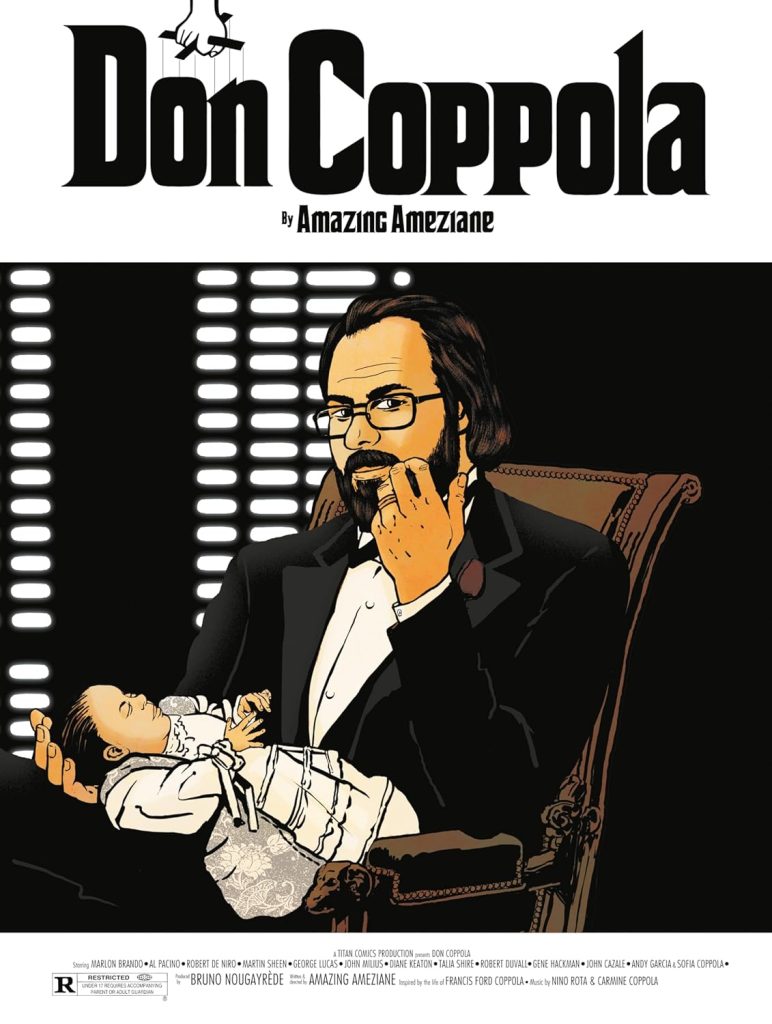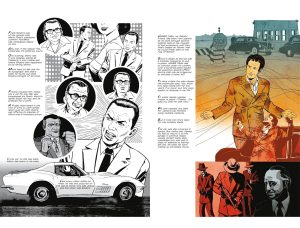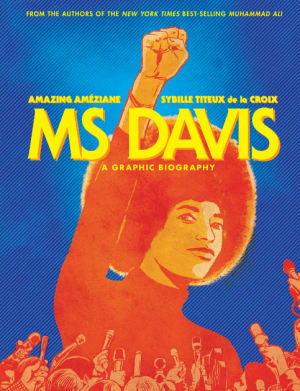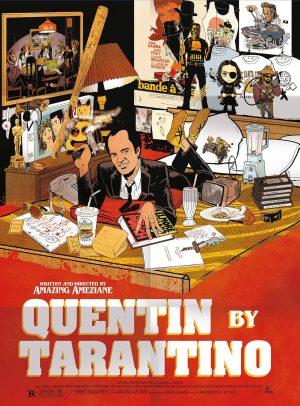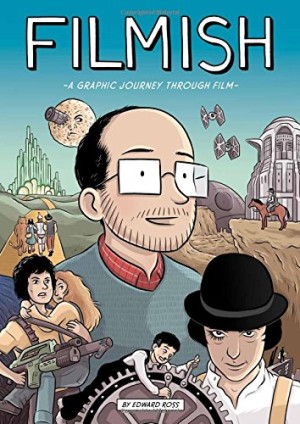Review by Frank Plowright
In English at least, the second of Amazing Améziane’s biographies of a film director arrives relatively rapidly after his book on Quentin Tarantino, and follows much the same format of mixing well researched anecdotes, quotes and observations into an illustrated biography.
Even those intimately familiar with Francis Ford Coppola and the films he directed is likely to discover new information or a new viewpoint simply through the illustrations and the way connections are produced. This begins with the family tree and noting Coppola’s grandfather invented technology that enabled talking pictures. Readers with only a cursory knowledge of Coppola’s better known films pulled in by the authenticity and the imagination of the art, will discover a deep delve into those projects.
As with Tarantino, Améziane presents a first person narrative, yet without acknowledging the source of any quotes, although a bibliography is listed. The idea of Coppola speaking for himself is attractive, providing the intimacy his films often have. Améziane skates through the early career rapidly, with no film prior to The Godfather allocated as much as a page while his early days with George Lucas merit five based on the production company they formed.
Along with Apocalypse Now, Coppola’s reputation rests on the three Godfather films. They’re extensively chronicled from Coppola’s initial reluctance to take the project on, via quotes from writer Mario Puzo, through difficulties with the cast before global acclaim. Those who know neither book nor film may find some stories horrifying. It’s presented via clever visual devices, such as studio executives taking part in frustrating discussions named in versions of the Paramount logo. However, spending just under a third of the book covering every detail of the first two films (with another dozen pages for Part III) may alienate those wanting more of a career overview. Perhaps the indication is there in an introduction in which Améziane recalls being spellbound at a TV version of The Godfather that recut the first two films into chronological order.
A further quarter of Don Coppola concerns Apocalypse Now, dealt with in equal detail, as Améziane confirms a decision to focus on the gold standard catalogue almost exclusively. It means anyone wanting to know about Rumble Fish, The Cotton Club or Peggy Sue Got Married is served the briefest of recollections, although for Dracula Améziane runs an article he wrote at the time.
Coppola’s two most recent films (Tetro, 2009 and Twixt, 2011) are covered in two single sentence paragraphs, despite the latter being a reaction to the death of Coppola’s son. One might expect more.
Améziane ends with Coppola talking of making his final film, Megalopolis, due to be released in 2024, yet a production dogged with questions of inappropriate behaviour.
The art is creative, with likenesses spot on, and the information about Coppola’s major films is exhaustive, but anyone whose interests run deeper could find this lacking.
Martin Scorcese is the subject of Améziane’s next graphic novel, due out before the end of 2024.
